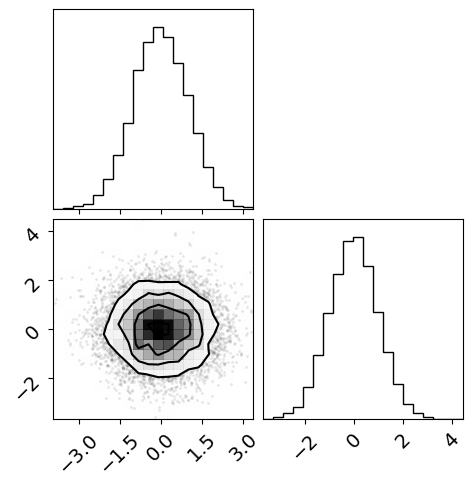Getting started#
The only user-facing function in the module is corner.corner and, in its simplest form, you use it like this:
import corner
import numpy as np
ndim, nsamples = 2, 10000
np.random.seed(42)
samples = np.random.randn(ndim * nsamples).reshape([nsamples, ndim])
figure = corner.corner(samples)

The following snippet demonstrates a few more bells and whistles:
# Set up the parameters of the problem.
ndim, nsamples = 3, 50000
# Generate some fake data.
np.random.seed(42)
data1 = np.random.randn(ndim * 4 * nsamples // 5).reshape(
[4 * nsamples // 5, ndim]
)
data2 = 4 * np.random.rand(ndim)[None, :] + np.random.randn(
ndim * nsamples // 5
).reshape([nsamples // 5, ndim])
data = np.vstack([data1, data2])
# Plot it.
figure = corner.corner(
data,
labels=[
r"$x$",
r"$y$",
r"$\log \alpha$",
r"$\Gamma \, [\mathrm{parsec}]$",
],
quantiles=[0.16, 0.5, 0.84],
show_titles=True,
title_kwargs={"fontsize": 12},
)

The API documentation gives more details about all the arguments available for customization.

